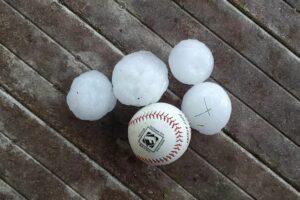Spring has sprung, signaling commercial property owners to prepare their HVAC systems for the seasonal transition. Ensuring optimal performance of heating, ventilation, and air conditioning (HVAC) systems not only improves comfort, but also enhances energy efficiency and prolongs the lifespan of equipment. Optimize your HVAC systems in your commercial property this spring season.
Prepare Your HVAC System for the Spring
Seasonal transitions pose unique challenges to HVAC systems. As temperatures fluctuate, your systems must adapt to meet changing heating and cooling demands. Neglecting seasonal maintenance can lead to inefficiencies, increased energy consumption, and costly repairs. Here are ways you can ensure your HVAC system is prepared for the spring:
Inspect and Clean Air Filters
Air filters play a crucial role in maintaining indoor air quality and preventing dust and debris buildup within HVAC systems. Commercial property owners should schedule regular inspections and clean or replace air filters as needed to ensure proper airflow and efficiency.
Check Thermostat Settings
Adjusting thermostat settings to accommodate milder spring temperatures can optimize HVAC performance and reduce energy consumption. Consider programming thermostats to automatically adjust temperatures based on occupancy patterns and business hours.
Evaluate Ventilation Systems
Proper ventilation is essential for promoting indoor air circulation and minimizing the spread of pollutants and allergens. Inspect ventilation systems, including ductwork and exhaust fans, for obstructions or damage that may impede airflow.
Schedule Professional Maintenance
Partnering with HVAC professionals for seasonal maintenance can identify potential issues early and prevent costly breakdowns. Professional technicians can inspect HVAC components, perform tune-ups, and recommend efficiency upgrades to optimize system performance.
Assess Cooling Equipment
Spring signals the transition from heating to cooling mode for many HVAC systems. Inspect cooling equipment, such as air conditioners and refrigeration units, to ensure they are clean, properly calibrated, and free of leaks or malfunctions.
How Will This Benefit Your Property?
Spring HVAC optimization offers commercial property owners a multitude of benefits. By prioritizing seasonal maintenance, property owners can enjoy improved indoor comfort, with HVAC systems maintaining consistent temperatures and humidity levels for occupants. Additionally, proper maintenance enhances energy efficiency, leading to reduced energy consumption and lower utility costs. Moreover, regular maintenance tends to extend the lifespan of HVAC equipment, minimizing the need for premature replacements and reducing long-term expenses. To top it all off, optimizing your HVAC systems contributes to the overall sustainability efforts of your building. To learn about the consequences of neglecting to maintain your HVAC system, read our blog: Neglected HVAC Maintenance- Costly Consequences
As the seasons change, commercial property owners should prioritize HVAC maintenance to ensure comfort, efficiency, and longevity. By following the steps outlined in this guide and partnering with HVAC professionals, property owners may optimize their systems for the seasonal transition and enjoy peace of mind knowing their investment is protected.



